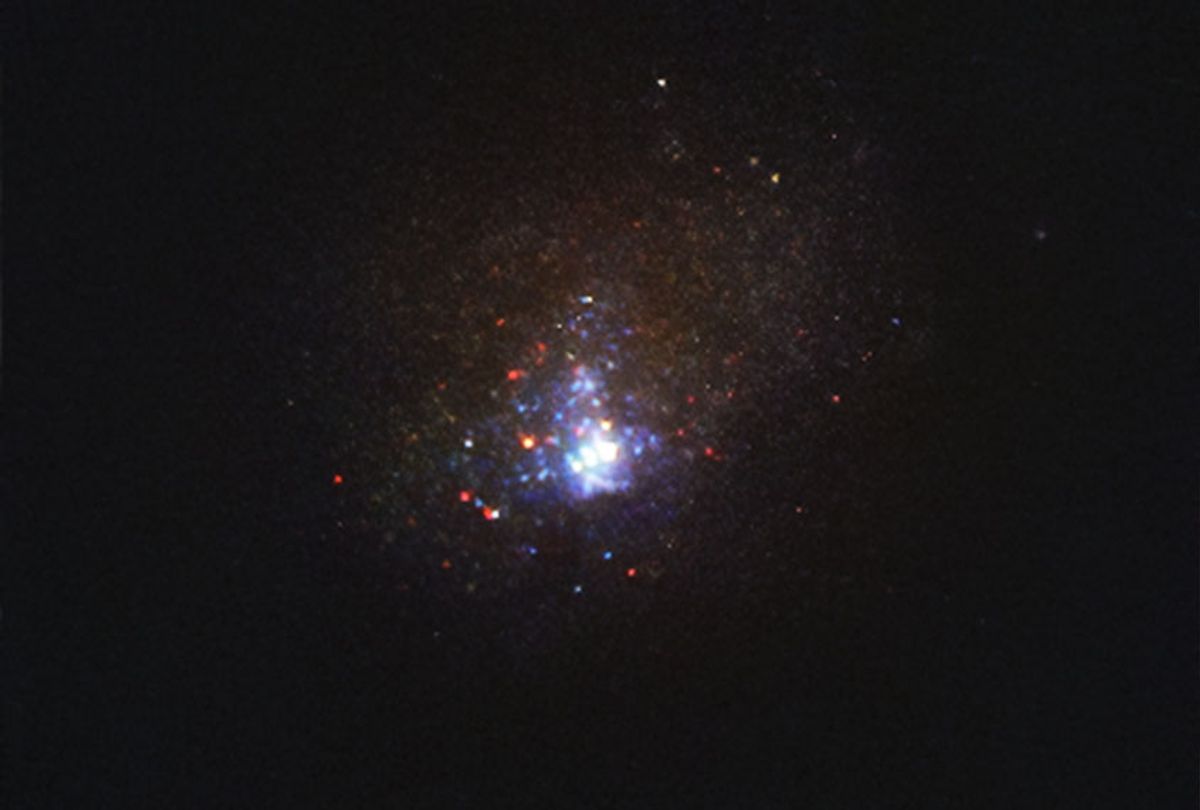Since the dawn of the Space Age, astrobiologists have worked to determine whether neighboring planets harbor life forms, particularly microbes like bacteria, archaea, and fungi. Some scientists are wondering if they left something out. Now, the search for extraterrestrial life has landed on viruses.
NASA's Virus Focus Group is integrating advancements in virology into astrobiology, the study of life's origins, evolution, and distribution in the universe. By providing a forum for scientists interested in astrovirology, they hope to formulate "new areas of research to advance our understanding of how viruses may have influenced the origin and evolution of life here on Earth, and perhaps elsewhere in the Solar System," according to a Focus Group presentation from 2015.
Recent NASA-sponsored astrovirology workshops amass interest from scientists spanning borders and levels of experiences, says Kathryn Bywaters, a scientist with the Search for Extraterrestrial Intelligence (SETI) at NASA Ames Research Center. "It created a forum where people could express these ideas that they haven't really been able to vocalize on the community level."
With an active and engaged community of interested researchers, the hope is that these workshops will spur NASA towards allocating more funding towards astrovirology research.
Microbes, or organisms such as microscopic fungi, archaea, bacteria, and amoebas, occupy virtually every environment on our planet, and astrobiologists have long-considered the possibility of microbes living elsewhere in our solar system, such as on Mars, Venus, and some of the moons of Jupiter and Saturn. However, microbes on Earth are outnumbered and modulated by viruses.
Viruses, while not technically "alive", vastly outnumber all living organisms on our planet tenfold. There are an estimated 1031 viruses on Earth — if every virus on Earth were lined up end to end, that line would extend 100 million light years. And as evidenced by the ongoing COVID-19 pandemic, they can dramatically influence life on Earth.
But extraterrestrial viruses have not traditionally been a major search target in astrobiology. "We haven't looked for [extraterrestrial] viruses specifically before because we've just barely started to scratch the surface of understanding them on Earth," says Bywaters. "Previous to now, the technology and the know-how and the understanding of viruses hasn't been at a point that we could really extrapolate that to other planetary bodies."
Astrobiologists are only now beginning to incorporate knowledge of viruses into the growing body of knowledge about life's origin, evolution, and distribution in the cosmos. Over the years, astrobiology has been a key component of investigating life's history: by researching the conditions that may resemble early Earth or be found on other planets, scientists can investigate the environmental conditions that may have led to the development of life.
Although virology studies have historically focused on viruses influencing human health, scientists have also discerned a more comprehensive picture of the many functions that viruses play in our world. Certain viruses modulate human, animal and planthealth, giving organisms physical and chemical tools to resist pathogens and environmental stressors. They frequently co-evolve with their hosts and drive host evolution, including catalyzing the development of the mammalian placenta. They regulate nutrient turnover in our oceans, breaking apart cells and releasing nutrients critical to marine ecosystems.
Viruses are a unique case in nature — although they are composed of the same molecules like proteins and nucleic acids as living cells, they cannot reproduce independently. Instead, they need to hijack the cellular machinery of a host to replicate. Finding a virus on Mars or a Saturnian moon would be a revolutionary advancement in astrobiology. "Assuming that viruses replicate the same way in all systems, detection of a virus would be an indirect detection of cellular life," says Kenneth Stedman, a professor at Portland State University and co-chair of the Virus Focus Group.
Adding viruses to the docket of targets in the search for extraterrestrial life would probably not even require a major shift in instrumentation or technology, says Bywaters. Technologies intended for use on spacecraft are currently being developed to analyze long-chain polymers such as DNA and RNA and would be capable of detecting living cells, viruses, and even non-conventional life forms different from what we would see on Earth.
To say that viruses have a bad reputation among humans would be an understatement. As the COVID-19 pandemic has revealed, these tiny biological agents have the potential to harm human health and drastically alter social behaviors. Although some viral strains have massive impacts on human health, the vast majority of viruses only infect microbes. Bywaters hopes that astrovirology can assist in "changing the mentality of the general populace that viruses don't have to have this negative connotation," as they are not always "these evil little things that destroy the world."
Stedman emphasized via email that viruses are "critical for life on Earth as we know it — and maybe off Earth too." Astrovirology can help scientists continue to learn about viruses on Earth: along with searching for extraterrestrial viruses, the field could provide insight into how viruses helped shape life's origin and evolution, since viruses emerged early in the evolution of life on Earth. Additionally, it can lead towards better understanding the roles that viruses play here on Earth, "particularly early Earth and extraterrestrial analog ecosystems," says Stedman.
"[Astrovirology] really pushes the boundary of what sort of life or what signs of life you could look for," says Bywaters. "There's so much we don't know. That mystery and intrigue is really what fascinates me, because it shows you that anything is possible." ![]()


Shares